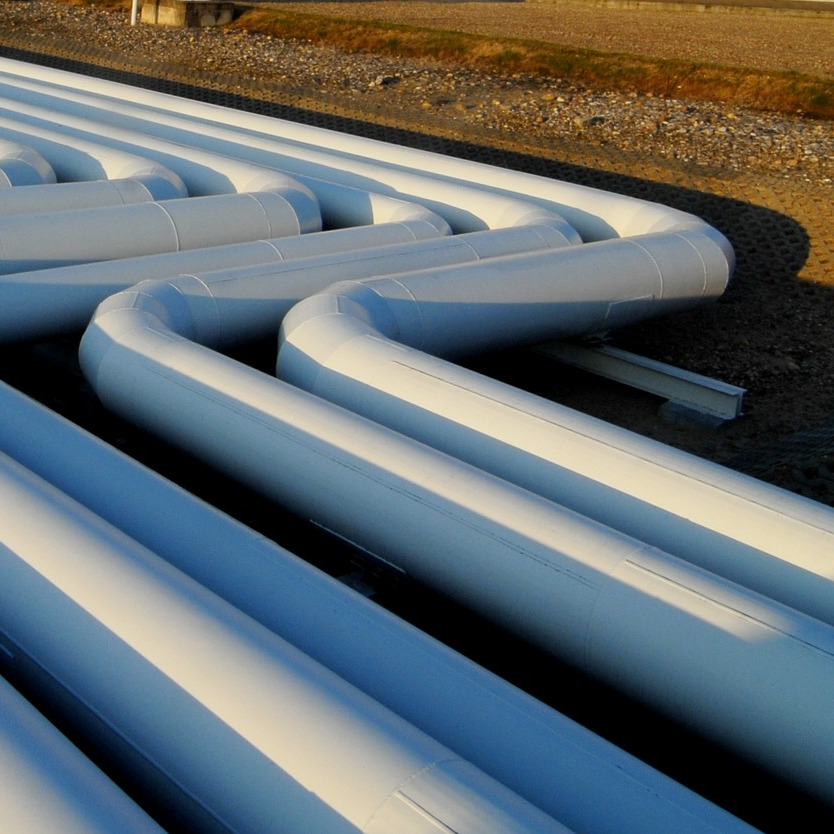

MaTeZ

MaTeZ is a software for heat loss management. The MaTeZ application in cooperation with the MOP system uses a thermo-hydraulic model of the heat network, which is calibrated both in temperature and pressure.


This software (MaTeZ) was created with state support of the Technology Agency of the Czech Republic within the THETA Program (Project No. TK01020050 entitled “Energy Loss Management in Heat Distribution”).
The application is designed to solve the following type of tasks:
- analysis of the resulting annual heat losses, namely:
- structural,
- sectional;
- simulation of the effects of measures or changes, namely:
- parametric,
- technological,
- topological;
- heat loss planning, ie assembly of:
- basic plan,
- alternative plans;
- monitoring of development and trends, ie:
- deviations and tendencies,
- failures and accidents.
Task 1a
The structural analysis of the resulting annual heat losses will enable their balance breakdown into the main components, which in the case of hot water heat networks are losses:
- in the supply pipe,
- in the return pipe,
- in loss of circulation.
In the case of steam heating networks, these will be losses:
- in the steam pipeline,
- in the condensate pipe,
- in unreturned condensate.
The solution of this task will enable the user to orientate in the structure of heat losses in the given network, respectively in the share of the respective components in the total heat losses in order to determine the strategy
of technical and operational measures.Task 1b
Sectional analysis of the resulting annual heat losses will allow the decomposition of total balance heat losses according to:
- selected sections of the heat network (feeders, turnoffs),
- selected areas of the heat network (branches, areas).
The solution of this task will allow the user to identify the most loss-making sections and thus determine the order (preference) of possible reconstructions, shutdowns or renewals of the original sections of the network.
Task 2a
Simulation of the effects of parametric changes in the network on total heat loss will allow the user to quantify and evaluate the effects of:
- change of heat transfer medium temperatures in the hot-water network,
- change of inlet steam pressures in steam networks.
The results of the relevant simulation will allow the user to evaluate the achievable effects of the relevant changes in order to implement appropriate operating measures, such as adjustments to the output heating curves from the source, or adjustments to the inlet pressure control into the network or parts thereof.
Task 2b
Simulation of the impacts of technological changes in the network on total heat losses will allow the user to evaluate the effects due to:
- changes in the quality of pipe insulation (reconstruction, re-insulation),
- changes in customer station technology (cooling, condensate return).
The results of such a simulation will allow the user to evaluate the achievable effects of individual measures in relation to the preparation of an investment plan or repair and maintenance plan.
Task 2c
Simulation of the effects of topological changes in the network on the total heat loss will allow the user to evaluate the effects, for example when:
- looping or disconnection of circuits in the network,
- shutdown or start-up of some power supplies or jumpers in the network.
The results of such simulations will be usable especially in the preparation of network operation, or for the revision of existing operating practices.
Task 3a
After entering the expected development of average annual and average monthly temperatures and entering extraordinary (expected) changes on the side of heat sales or distribution, the basic heat loss plan will allow to compile:
- monthly loss plan,
- annual loss plan.
This functionality will contribute to the improvement of planning and, in particular, will create a basis for modification or creation of alternative heat loss plans (see the following point).
Task 3b
Alternative heat loss plans will address the most significant uncertainties during the year, such as:
- connection / disconnection of significant customers,
- implementation / non-implementation of reconstructions and repairs of part of the network.
Alternative plans will make it possible to reflect operational changes in heat losses in distribution systems in the companies' overall economic plans and preliminary calculations of heat prices.
Task 4a
Monitoring deviations and trends in the development of energetic losses against planned losses will enable:
- timely identification of technical defects (leaks, malfunctions of regulations, etc.),
- timely identification of measurement errors or measurement failures.
Solving this problem will contribute to a faster response to deviations during normal operation (difficult to identify faults) and their timely correction.
Task 4b
Monitoring deviations of actual and planned losses after failures and accidents, which can be used, for example, for:
- evaluation of energy losses for a given type of failure or accident,
- evaluation of the cost of delays in the elimination of failures and accidents.
Solving this task will contribute to a better organization of emergency solutions and to better planning of preventive maintenance and repairs.



phone: 283 840 357, 283 840 355; web: www.ortep.cz; e-mail: ortep@ortep.cz
